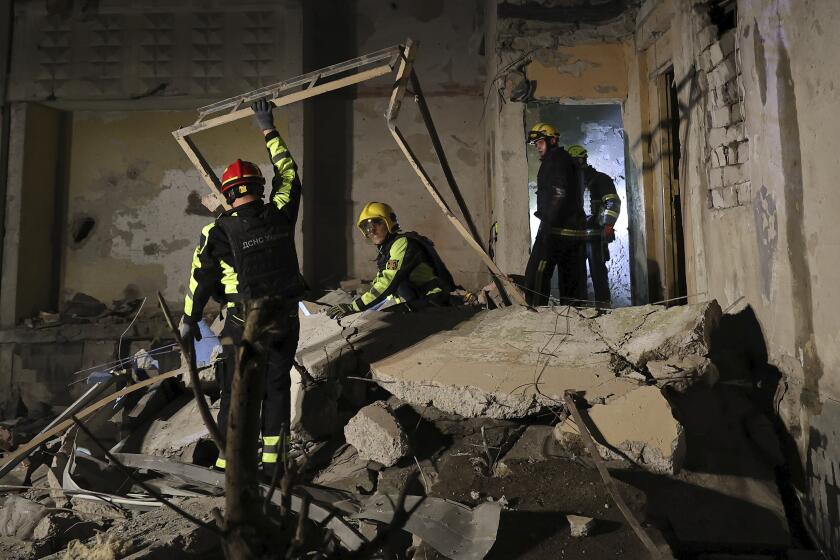More U.S. Forces Are Called Up
Abandoning plans to scale back the U.S. force in Iraq, the Pentagon on Tuesday announced that it would send 20,000 additional troops there earlier than expected and keep the military at its post-invasion peak of 135,000 through the end of 2005.
The statement by Defense Secretary Donald H. Rumsfeld marked a clear acknowledgment that security challenges wrought by a determined and widespread Iraqi insurgency continue to roil the country and that U.S. allies are unwilling to send additional forces.
The decision, likely to keep a debate on war planning going through the 2004 presidential election, came only weeks after Pentagon managers extended the yearlong tours of 20,000 troops for an additional three months.
But just as military officials broke a promise to troops who were told that they would serve only 12 months in Iraq, the new plan will break the promise of a year’s rest in the United States to members of at least one Army unit -- the 10th Mountain Division’s 2nd Brigade, which ended a tour in Afghanistan in December, will arrive in June or July.
Rumsfeld’s decision again raised the issue of whether the military is stretched too thin. Before Army Gen. John Abizaid, head of the U.S. Central Command, extended the current deployment -- in some cases sending soldiers from the 1st Armored Division and other units back to Iraq from the tarmac under their homebound planes in Kuwait -- Pentagon strategists had planned to reduce the force in Iraq to 115,000 immediately, then make deeper cuts throughout the year.
Rumsfeld’s order identified only 10,000 of the 20,000 additional troops to be called up. They include the Camp Pendleton-based 11th Marine Expeditionary Unit, the 24th MEU from Camp Lejeune, N.C., and the 2nd Brigade of the Ft. Drum, N.Y.-based 10th Mountain Division.
The Marines will remain in Iraq for seven months and the soldiers will pull yearlong tours of duty, said Air Force Lt. Gen. Norton Schwartz, head of operations for the Joint Chiefs of Staff. All are now slated to arrive earlier than they otherwise would have, officials said.
Army officials said commanders of the 10,000 troops not identified publicly have been notified that they are heading to Iraq.
In addition to the 20,000 additional troops, the Pentagon alerted 37,000 support soldiers -- mostly in National Guard or Reserve units -- that they would be replacing about the same number of departing troops.
The new deployments allow troops from the 1st Armored Division and the Army’s 2nd Armored Cavalry Regiment to go home after 15 months in Iraq -- three months longer than their promised tours of duty.
Although Schwartz said the additional deployments would not require an increase in the military’s overall troop strength in the short term, he left the door ajar to a potential increase if troops continue to be called up at the current pace.
“I think we can handle the tempo. It is demanding, no doubt about it. I have not come to the conclusion that we need to grow the force yet. That depends on the conditions” in Iraq and elsewhere, he said.
“This is not something we would want to do in a peacetime situation,” he added.
Because of the rising death toll from attacks on American convoys involving rocket-propelled grenades and roadside bombs, the new troops will arrive with more armored vehicles than in the past, Schwartz said.
With 129 military personnel killed in combat, April was the deadliest month yet for American forces. Since the invasion began in March last year, 756 troops have died.
Conditions are likely to worsen as guerrillas intensify their attacks ahead of the planned June 30 transfer of sovereignty from the U.S.-led coalition to Iraqis, Rumsfeld warned.
“So you’re going to have a period of uncertainty from now, and you’re also going to have a period of increased attacks,” Rumsfeld said. “I mean, we just have to expect that. There are people who don’t want this to happen in that country.”
More to Read
Sign up for Essential California
The most important California stories and recommendations in your inbox every morning.
You may occasionally receive promotional content from the Los Angeles Times.










